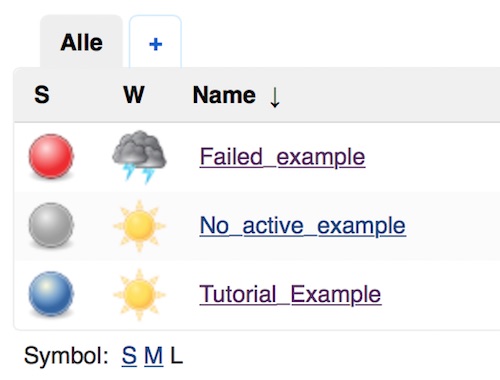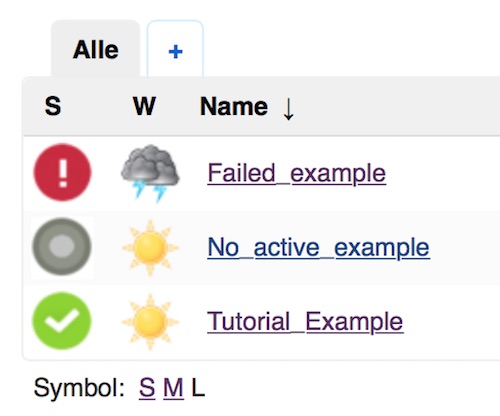With only two python libraries and some line of codes, you are able to create very nice test-reports in PDF format. This tutorial should give you a hint. Feel free to improve with your requirements.
Preconditions
Example
matplotlib==1.4.3
reportlab==3.2.0
# -*- coding: utf-8 -*-
import time
import matplotlib.pyplot as plt
from reportlab.platypus import SimpleDocTemplate, Paragraph, Spacer, Image
from reportlab.lib.styles import getSampleStyleSheet, ParagraphStyle
from reportlab.lib.enums import TA_JUSTIFY
from reportlab.lib.pagesizes import letter
from reportlab.lib.units import inch
class CreateTestReport(object):
"""Example test report class"""
def __init__(self, test_results, file_name):
"""Constructor method"""
self.data = test_results
self.file_name = file_name
self.story = list()
self.styles = getSampleStyleSheet()
self.styles.add(ParagraphStyle(name='Justify', alignment=TA_JUSTIFY))
def __create_overview(self):
"""Create overview graphic and pdf content"""
requests = list()
duration = list()
for lists in self.data:
requests.append(lists[0])
duration.append(lists[1])
plt.plot(duration)
plt.xlabel('http requests')
plt.ylabel('response time')
plt.xticks(range(len(duration)), requests)
plt.grid(True)
plt.savefig('overview.png')
text = '<font size=18>Overview</font>'
self.story.append(Paragraph(text, self.styles["Heading2"]))
picture = Image('overview.png', 6*inch, 4*inch, hAlign='LEFT')
self.story.append(picture)
text = '<font size=12>Lorem ipsum dolor sit amet, <br/>\
consetetur sadipscing elitr, sed diam nonumy eirmod tempor invidunt \
ut labore et dolore magna aliquyam erat, sed diam voluptua.<br/>\
At vero eos et accusam et justo duo dolores et ea rebum. <br/>\
Stet clita kasd gubergren, no sea takimata sanctus est Lorem ipsum \
dolor sit amet. Lorem ipsum dolor sit amet, consetetur sadipscing \
elitr, sed diam nonumy eirmod tempor invidunt ut labore et dolore \
magna aliquyam erat, sed diam voluptua. <br/>\
At vero eos et accusam et justo duo dolores et ea rebum. <br/>\
Stet clita kasd gubergren, no sea takimata sanctus est Lorem ipsum \
dolor sit amet.</font>'
self.story.append(Paragraph(text, self.styles["Normal"]))
self.story.append(Spacer(1, 192))
def __create_round_trips(self):
"""Create round trip graphics and pdf content"""
for lists in self.data:
text = '<font size=18>%s: %s HTTP/1.1</font>' % (lists[3],
lists[4])
self.story.append(Paragraph(text, self.styles["Heading2"]))
text = '<font size=12>Status Code: %s</font>' % lists[2]
self.story.append(Paragraph(text, self.styles["Normal"]))
self.story.append(Spacer(1, 12))
file_name = 'request_' + str(lists[0]) + '.png'
title = 'Request Circle (' + str(lists[1]) + ' sec.)'
plt.figure(figsize=(4, 4))
plt.title(title)
values = lists[5]
labels = ['Request', 'Server', 'Response']
plt.pie(values, labels=labels)
plt.savefig(file_name)
picture = Image(file_name, 2.5*inch, 2.5*inch, hAlign='LEFT')
self.story.append(picture)
self.story.append(Spacer(1, 24))
def create_pdf(self, report_title, author, base_url, margins):
"""Create PDF document"""
formatted_time = time.ctime()
pdf = SimpleDocTemplate(self.file_name,
pagesize=letter,
title=report_title,
author=author,
topMargin=margins[0],
leftMargin=margins[1],
rightMargin=margins[2],
bottomMargin=margins[3])
# Add headline, created date/time and author
text = '<font size=24>%s</font>' % report_title
self.story.append(Paragraph(text, self.styles["Heading1"]))
self.story.append(Spacer(1, 12))
text = '<font size=10>%s<br/>by %s<br/>%s</font>' % (formatted_time,
author,
base_url)
self.story.append(Paragraph(text, self.styles["Italic"]))
self.story.append(Spacer(1, 24))
# Add overview
self.__create_overview()
# Add results
self.__create_round_trips()
# Create and store report
pdf.build(self.story)
if __name__ == '__main__':
# some test result data
data = ([1, 0.5, 200, 'GET', '/api/getUser', [40, 40, 20]],
[2, 0.75, 200, 'POST', '/api/createUser', [50, 30, 20]],
[3, 0.25, 404, 'PUT', '/api/updateUser', [50, 25, 25]],
[4, 2, 301, 'GET', '/api/Logout', [25, 50, 25]],
[5, 0.25, 200, 'POST', '/api/Login', [45, 35, 20]])
# create report
CREATE = CreateTestReport(data, 'TestReport.pdf')
CREATE.create_pdf('Example Test Report',
'Lupin3000',
'http://example.com',
[20, 20, 20, 10])
You can call it simply by
# execute without compile
$ python -B ExampleReport.py



